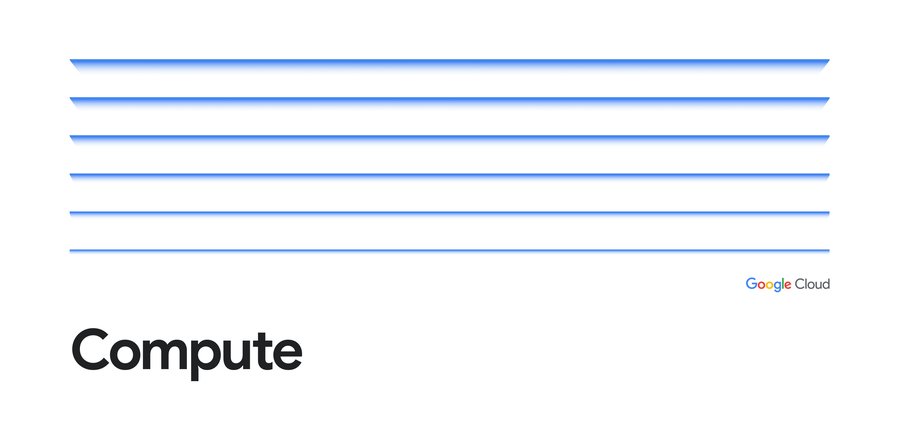Google Cloud HPC for computer aided engineering: Accelerate your design and simulation workflows
Felix Schürmann
Senior HPC Technologist
Wyatt Gorman
Solutions Manager, HPC & AI Infrastructure, Google Cloud
In today's competitive landscape, engineering and design teams face increasing pressure to innovate rapidly, improve product performance, and reduce time-to-market. Computer-aided engineering (CAE) is a critical tool to address these challenges, enabling engineers to simulate, analyze, and optimize designs virtually, reducing the need for costly physical prototypes and shortening development cycles.
Many CAE workflows require a significant amount of computational resources. Organizations use high-performance computing (HPC) to handle the complex simulations and large datasets, which traditionally meant having to operate dedicated, on-premises HPC environments. However, the cloud’s capability to address HPC workloads has advanced dramatically, allowing engineering teams to benefit from the cloud’s performance, scalability, and flexibility.
Google has developed a Computer Aided Engineering solution that brings together the right technologies to run major CAE applications efficiently. The solution harnesses Google Cloud’s HPC capabilities and is tailored to the simulation and analysis steps of CAE workflows.
Unleashing innovation through CAE simulation and analysis
Computer Aided Engineering has revolutionized the engineering and design process, enabling engineers to simulate, analyze, and optimize designs virtually, reducing reliance on physical prototypes and accelerating product development cycles. CAE encompasses a wide range of applications, each addressing specific engineering challenges, including:
- Structural Analysis enables engineers to evaluate the strength, stiffness, and deformation of structures under various loads and conditions, ensuring the integrity and safety of designs.
- Fluid Dynamics enables engineers to simulate fluid flow around objects, optimizing aerodynamic performance and analyzing heat transfer characteristics.
- Thermal Analysis simulates heat transfer within and around components, ensuring thermal efficiency and preventing overheating.
- Electromagnetic Analysis simulates electromagnetic fields and their interactions with materials, crucial for designing antennas, RF circuits, and electromagnetic compatibility.
These use cases, along with many others, form the backbone of CAE, providing engineers with powerful tools to optimize designs and ensure product performance and safety. With the increasing complexity of engineering challenges and the demand for rapid innovation, CAE has become an essential component of the toolbox of engineering.


The above schematic shows a typical workflow in a product development lifecycle:
- Conceive: In the conceive stage, engineers use Computer Aided Design (CAD) tools to generate and explore design concepts.
- Design: In the design stage, engineers use CAD tools to refine and optimize their designs.
- Develop: In the develop stage, engineers use CAE tools to create prototypes and test them using the methods included in the validate stage.
- Validate: In the validate stage, engineers use CAE tools to verify that their designs meet the required performance and safety criteria.
- Manufacture: The manufacture stage takes the designed and validated digital artifacts to the real world, by using the CAD design as input to various manufacturing workflows.
The simulation and analysis of the validate stage heavily relies on High Performance Computing. By making HPC readily available for CAE workflows, engineers are enabled to run the validation step faster or even run more faithful models, overall increasing productivity and better products.
Google Cloud HPC: A powerful solution for accelerating CAE workflows
Google Cloud is helping customers bring up HPC environments that combine the benefits of a planet-scale, elastic, and flexible cloud with the HPC required by CAE simulation and analysis.
To make it easy to use Google Cloud for CAE workflows, we’ve assembled the right cloud components to meet the requirements of these computationally-intensive workloads. We designed the solution around Google Cloud’s H3 and C3 VM families, based on the latest Intel Xeon processors, which support high-memory bandwidth and balanced memory/flop ratios, making them well suited for CAE workloads. The solution can handle tightly-coupled MPI applications and memory-intensive workloads with up to 16GB/core. It also includes various storage solutions addressing both regular and challenging I/O requirements. For resource management, it supports schedulers such as SchedMD’s Slurm and Altair’s PBS professional.
The CAE Reference Architecture blueprint has been verified to be compatible and deliver good performance with major leading CAE applications, such as: Ansys Fluent, Ansys Mechanical, Ansys LS-DYNA, Siemens Simcenter STAR-CCM+, Altair Radioss, and OpenFOAM. Here is the solution architecture:
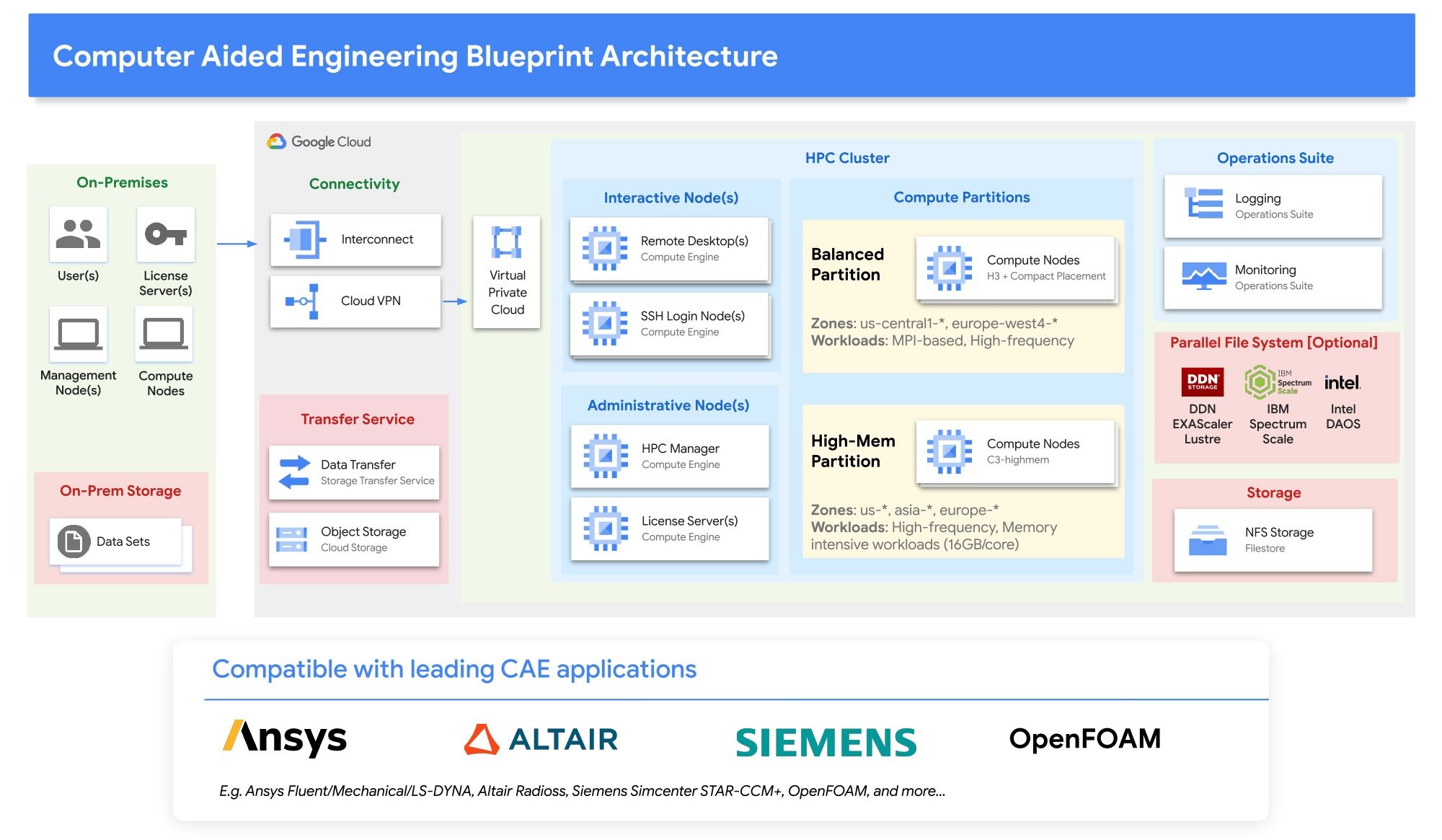

In addition to the CAE reference architecture blueprint, we also have blueprints that illustrate the customization for specific CAE software from binaries or source:
Performance for demanding CAE workloads
The Google CAE solution leverages Intel’s latest-generation Xeon processor (Intel Sapphire Rapids), configured for high per-core performance, making it a strong fit for per-core-licensed applications.
For a number of major CAE applications, we compared the performance of Google’s H3 VMs versus the previous generation of Intel-based VMs, C2. Leading CAE applications, Ansys Fluent 2022 R2, Siemens Simcenter STAR-CCM+ 18.02.008, and Altair Radioss 2022.3 perform 2.8x, 2.9x, and 2.6x faster on H3 VMs than on C2 VMs.
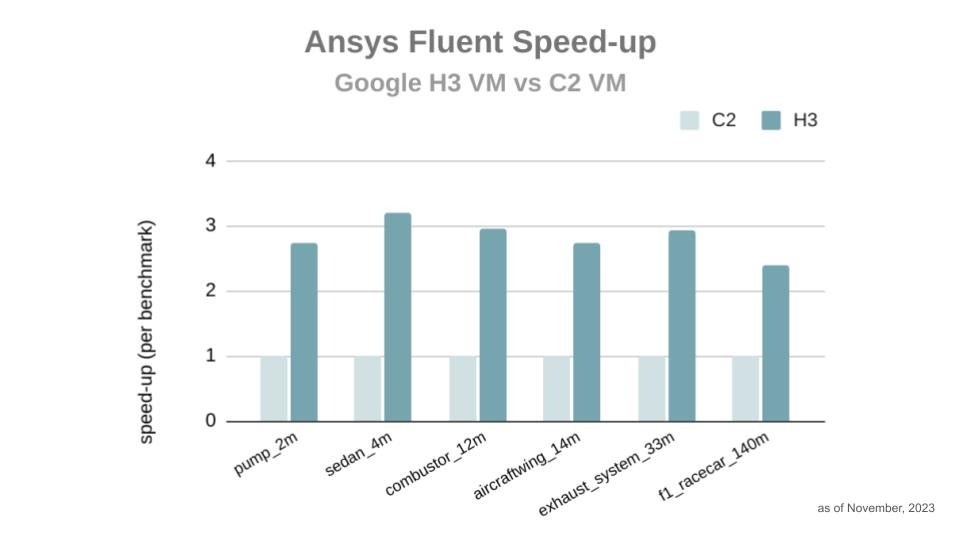

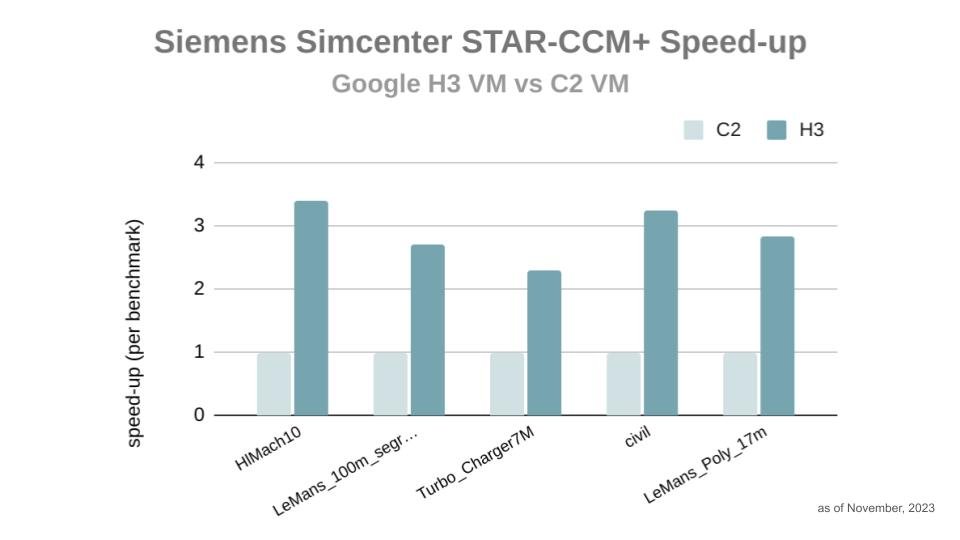

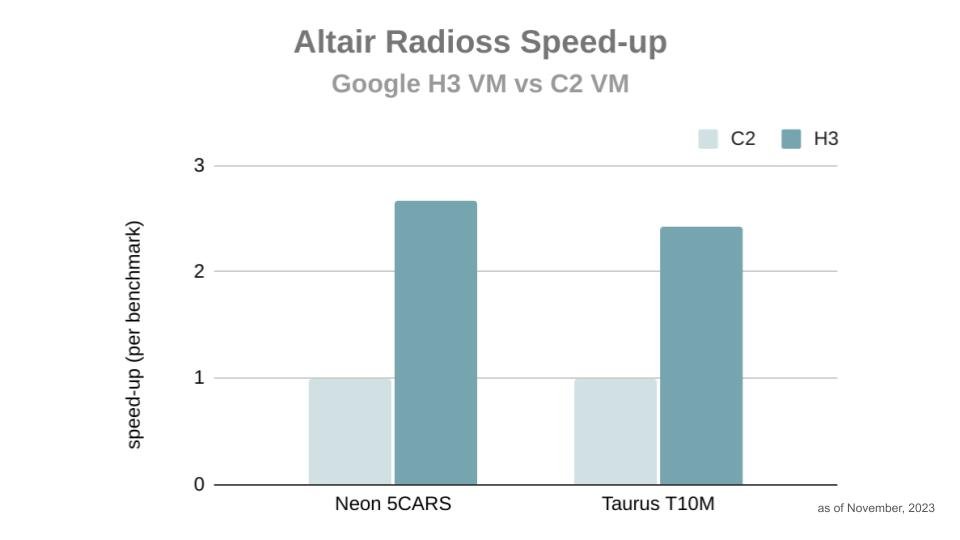

Engineers can get design validation results faster by allocating more computational resources to a single simulation. The graph below shows the performance increase of Ansys Fluent running the F1 RaceCar CFD benchmark with 140 million cells. Doubling the number of H3 VMs from two to four doubles the speedup. For Ansys Fluent, even at 16 VMs, which represents 1408 cores, the corresponding speedup is achieved with about 90% parallel efficiency.
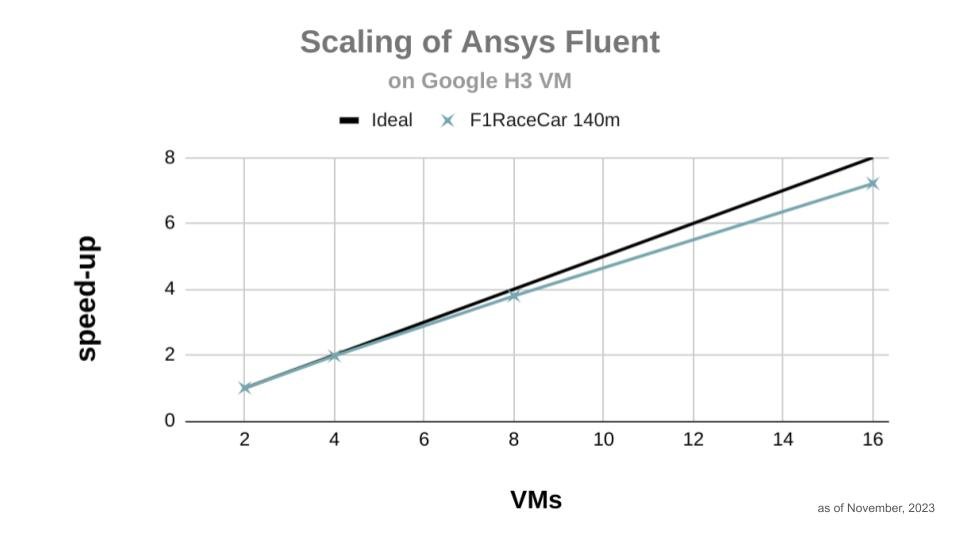

Streamlining CAE deployments with Cloud HPC Toolkit Blueprints
To help customers and system integrators easily leverage the CAE solution for their tailor-made deployments, we published the general purpose CAE reference architecture as Infrastructure as Code (IaC), a blueprint. Together with Google’s open-source Cloud HPC Toolkit, this blueprint can be used to readily deploy the CAE reference architecture in Google cloud.
The CAE solution has been tested with leading CAE applications, such as Ansys Fluent, Ansys Mechanical, Ansys LS-DYNA, Siemens Simcenter STAR-CCM+, Altair Radioss, and OpenFOAM.
Our technical reference guide on Running computer-aided engineering workloads on Google Cloud provides more information on the solution’s components, detailed benchmark data, and resources to get started.
Conclusion
Google Cloud provides a powerful and scalable HPC solution for demanding CAE workflows. Our CAE solution makes it easy for you to embark on this journey and experience the transformative power of accelerated simulations and analyses.
Visit our HPC website to learn more about our HPC solutions, and the Cloud HPC Toolkit documentation to start exploring the possibilities today. We would love to hear how the Cloud HPC toolkit is working for you through our support channels. Contact us to learn more.
